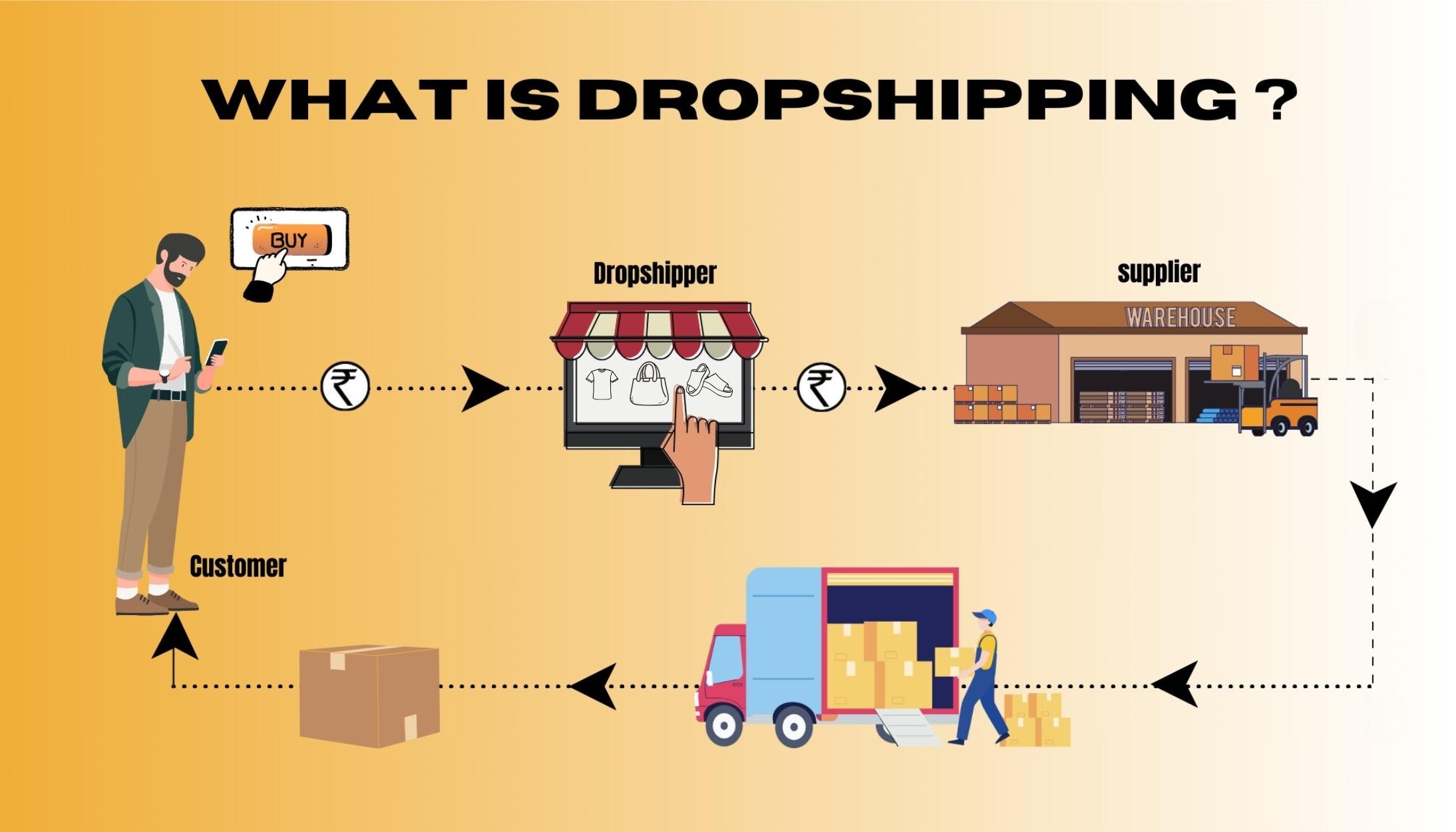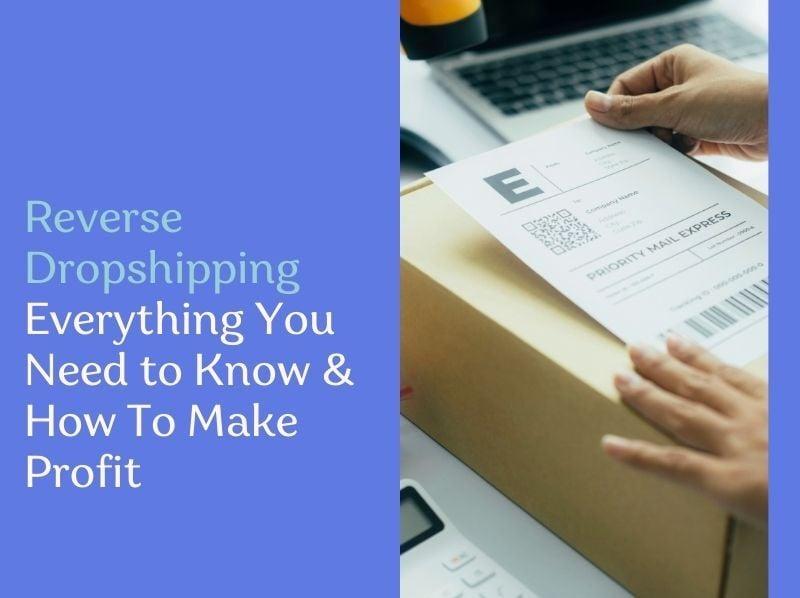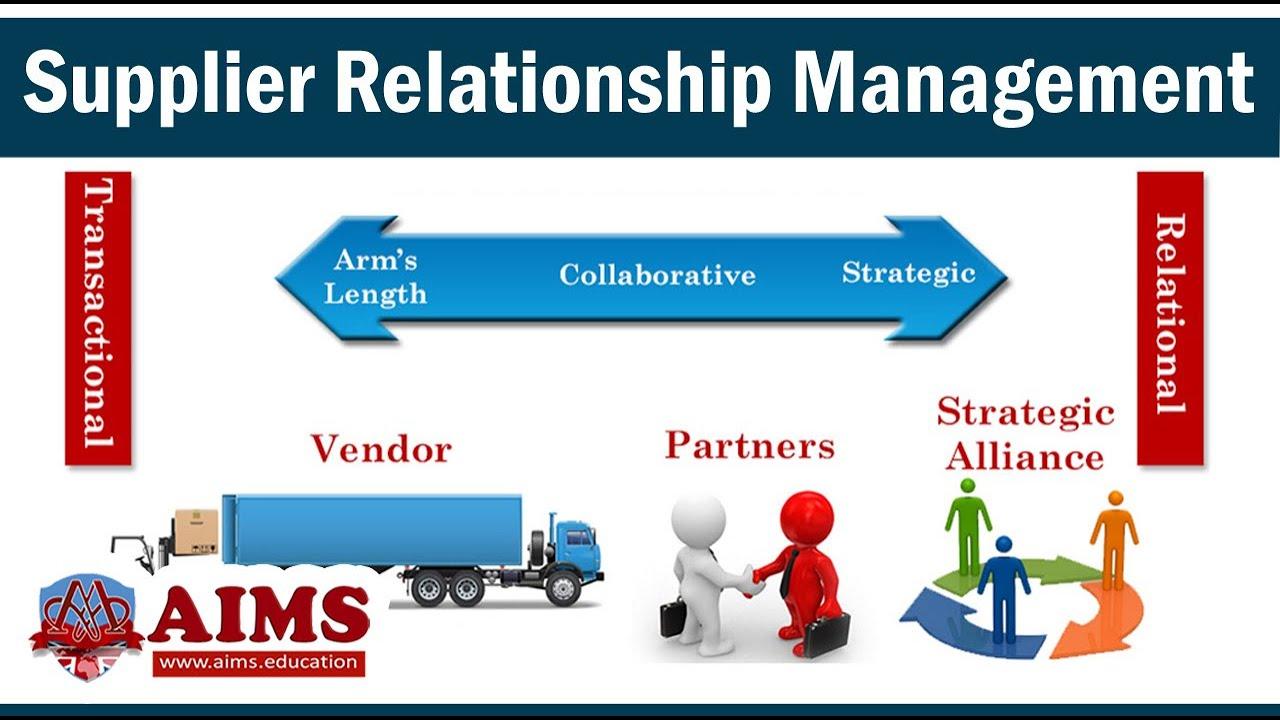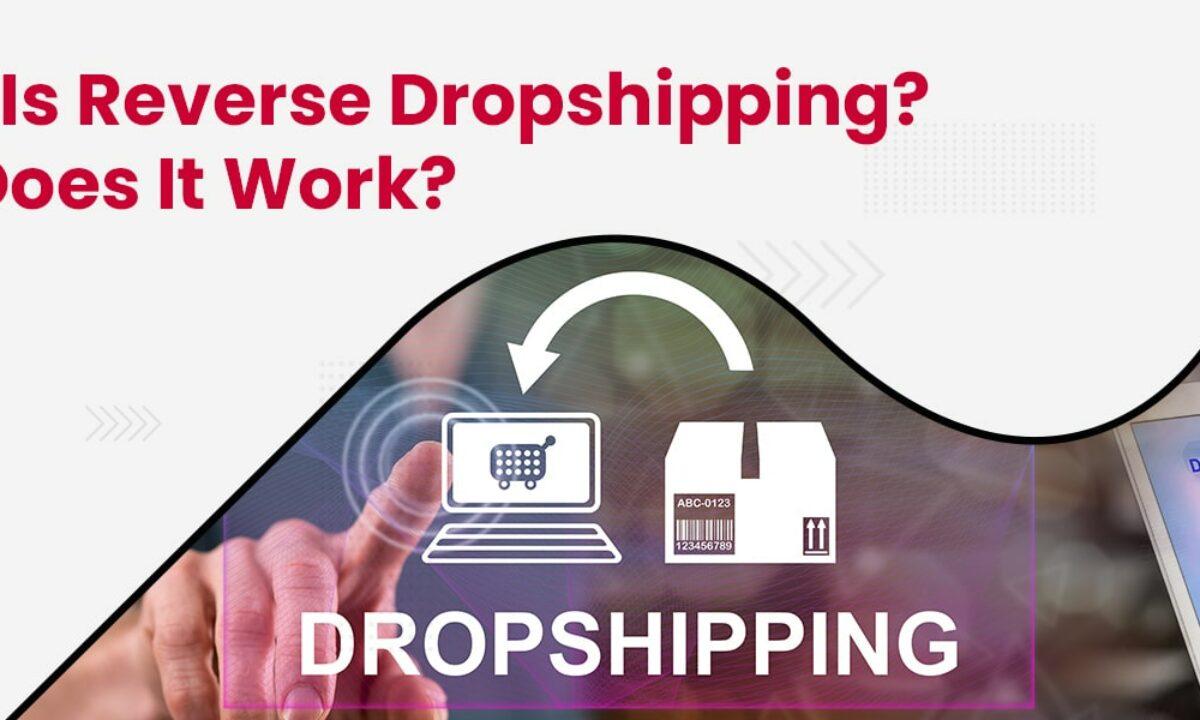
Introduction
Have you ever dreamed of running an online store without the hassle of managing inventory or dealing with shipping logistics? If so, reverse dropshipping might just be the game changer you’ve been looking for. This innovative business model flips the traditional dropshipping concept on its head, allowing you to source products from local suppliers while selling them in international markets. In a world where e-commerce is booming, understanding reverse dropshipping could open up a treasure trove of opportunities for entrepreneurs like you.
But what exactly is reverse dropshipping, and how does it work? In this article, we’ll break it down for you, exploring its mechanics, the enticing pros, and the potential pitfalls to watch out for. Whether you’re a seasoned seller or just dipping your toes into the e-commerce waters, this guide will equip you with the insights you need to decide if reverse dropshipping is the right fit for your business ambitions. So, let’s dive in and uncover the secrets of this exciting model!
Understanding Reverse Dropshipping and Its Unique Appeal
Reverse dropshipping is a fascinating model that flips the traditional dropshipping process on its head. Instead of sourcing products from local suppliers to sell to customers worldwide, reverse dropshipping involves sourcing products from international manufacturers and selling them to domestic markets. This unique approach capitalizes on the vast array of goods produced in countries with lower production costs, making it an attractive option for entrepreneurs looking to tap into a global marketplace.
One of the key appeals of reverse dropshipping lies in its ability to provide access to high-quality products at competitive prices. Many businesses in developed countries are often unaware of the unique items available from manufacturers abroad. By acting as the intermediary, you can introduce these products to your local market, offering customers something fresh and different that they might not easily find elsewhere.
Additionally, reverse dropshipping can significantly reduce overhead costs. Since you won’t have to maintain inventory or a physical storefront, the initial investment can be quite low. This model allows you to operate with minimal risk, making it ideal for new entrepreneurs or those testing the waters in e-commerce. You can focus your capital on marketing and reaching your target audience, rather than being tied down by stock and storage costs.
However, like any business model, reverse dropshipping has its pros and cons. Here’s a quick breakdown:
| Pros | Cons |
|---|---|
| Access to unique products | Longer shipping times |
| Lower overhead costs | Quality control challenges |
| Opportunity for niche markets | Potential language barriers with suppliers |
| Flexibility in scaling | Dependency on supplier reliability |
Another significant advantage is the ability to cater to niche markets. Many consumers are searching for specialized items that are not readily available in their local stores. By identifying these niches and curating a selection of international products, you can effectively position your business as a go-to source for these unique offerings.
On the flip side, managing relationships with international suppliers can present some challenges. Issues such as language barriers, cultural differences, and varying quality standards can complicate the process. It’s crucial to establish strong communication and build good relationships with your suppliers to mitigate these risks.
Ultimately, reverse dropshipping offers a distinctive opportunity for entrepreneurs willing to navigate the complexities of international trade. With the right approach and a keen understanding of your target market, you can leverage this model to create a thriving online business that stands out in a crowded market.
The Fundamentals of Reverse Dropshipping Explained
Reverse dropshipping flips the traditional dropshipping model on its head, allowing sellers to source unique products from suppliers in developed countries and sell them to consumers in emerging markets. This method focuses on leveraging high-quality items often overlooked by conventional retailers, presenting a lucrative opportunity for savvy entrepreneurs.
At its core, reverse dropshipping involves a few key steps:
- Identifying Suppliers: Look for reliable manufacturers or wholesalers based in developed economies, such as the U.S. or Europe.
- Market Research: Find niche markets in emerging economies where demand for premium goods is rising.
- Building an Online Store: Create a visually appealing eCommerce website to showcase your selected products.
- Marketing Your Products: Use targeted ads and social media marketing to reach potential customers in your chosen markets.
- Handling Logistics: Coordinate with suppliers to handle shipping and fulfillment while maintaining excellent customer service.
Many entrepreneurs are drawn to reverse dropshipping due to its potential for high profit margins. By offering unique, high-quality products that cater to specific market needs, sellers can charge premium prices. Unlike traditional dropshipping, which often involves mass-market, low-cost items, this model allows sellers to differentiate themselves in a crowded online landscape.
However, there are challenges to consider. One major hurdle is the increased complexity of logistics. Since products are sourced from developed countries and sold to markets with different shipping capabilities, managing timelines and customer expectations can be tricky. Additionally, it may require significant upfront investment in product marketing and customer acquisition.
To help illustrate the benefits and drawbacks of reverse dropshipping, here’s a simple table:
| Pros | Cons |
|---|---|
| High profit margins | Complex logistics |
| Unique product offerings | Requires market research |
| Opportunity for brand building | Potential customer service challenges |
Ultimately, reverse dropshipping can be a rewarding venture for those willing to navigate its challenges. By focusing on quality and uniqueness, sellers can carve out a niche that appeals to consumers looking for premium products, thereby fostering long-term customer loyalty and brand recognition.

How Reverse Dropshipping Differs from Traditional Dropshipping
Reverse dropshipping flips the traditional model on its head, creating a new dynamic in the world of e-commerce. Instead of sourcing products from local suppliers and selling them to customers, reverse dropshipping involves sourcing items from international suppliers to sell them in local markets. This model allows entrepreneurs to tap into unique products that may not be available in their home country, providing a competitive edge.
One fundamental difference is the target market. In traditional dropshipping, sellers focus on foreign buyers looking for low-cost products. Reverse dropshipping, however, is about bringing those unique, often high-quality goods from abroad to local consumers who are willing to pay a premium for them. This not only benefits the seller but also enriches the local market with diverse offerings.
Another distinction lies in supplier relationships. In traditional dropshipping, sellers often rely on low-cost suppliers who may not prioritize quality or service. In contrast, reverse dropshippers tend to establish relationships with reputable international manufacturers known for their superior products. This focus on quality can lead to higher customer satisfaction and improved brand loyalty.
When it comes to product pricing, the traditional model usually aims for lower prices to attract buyers. Reverse dropshipping, however, leverages the uniqueness and quality of products, allowing sellers to set higher price points. Customers are often willing to pay more for exclusive items that they can’t easily find locally, making this model potentially more profitable.
Shipping times can also differ significantly between the two models. With traditional dropshipping, fast shipping is crucial to keep customers satisfied. However, reverse dropshipping may involve longer shipping times from international suppliers. To combat this, sellers often focus on providing excellent customer service and transparent communication about delivery timelines, which can help mitigate any negative impacts of longer wait times.
In terms of marketing strategies, the approaches can vary greatly. Traditional dropshippers often rely heavily on digital marketing techniques to drive traffic to their online stores. In contrast, reverse dropshippers may focus on niche marketing, highlighting the uniqueness and quality of their products. This can involve storytelling and emphasizing the craftsmanship involved, which resonates well with consumers looking for something special.
| Aspect | Traditional Dropshipping | Reverse Dropshipping |
|---|---|---|
| Target Market | Foreign Buyers | Local Consumers |
| Supplier Relationships | Low-Cost Suppliers | Reputable International Manufacturers |
| Product Pricing | Low Price Focus | Higher Price for Unique Products |
| Shipping Times | Fast Shipping Required | Longer Shipping, Clear Communication |
| Marketing Strategy | Digital Marketing | Niche and Storytelling Marketing |
Ultimately, the choice between traditional dropshipping and reverse dropshipping depends on individual business goals and market opportunities. While both models have their advantages and challenges, understanding these key differences can help entrepreneurs make informed decisions that align with their vision for success.
The Benefits of Embracing Reverse Dropshipping
Embracing reverse dropshipping can open up a plethora of opportunities for entrepreneurs looking to innovate in the e-commerce space. This model shifts the traditional notion of dropshipping, allowing retailers to focus on niche markets and unique products that can set them apart from the competition.
Reduced Risk and Investment: One of the most compelling benefits of reverse dropshipping is the significant reduction in upfront investment. Traditional retail often requires substantial inventory purchases, while reverse dropshipping allows you to only purchase items after a sale is made. This minimizes financial risk and enables you to experiment with different products without breaking the bank.
Access to Unique Products: By sourcing products directly from international suppliers, you can gain access to unique and innovative items that are not readily available in your local market. This can give you a competitive edge, as consumers are always on the lookout for something new and exciting.
| Benefits | Description |
|---|---|
| Global Reach | Sell products from anywhere in the world, expanding your customer base. |
| Flexibility | Adapt your product offerings quickly based on market trends. |
| Lower Overheads | Eliminate warehouse and storage costs associated with inventory. |
Enhanced Customer Experience: With reverse dropshipping, you can better cater to customer preferences by providing unique products that resonate with their tastes. This personalized approach can lead to higher customer satisfaction and loyalty, creating a win-win situation for both you and your buyers.
Streamlined Operations: Managing a reverse dropshipping business can be more straightforward than traditional retail. Since you’re not handling inventory or shipping logistics, your focus can shift to marketing, customer engagement, and driving sales. This streamlined approach allows for more efficient use of your time and resources.
Scalability: As your business grows, reverse dropshipping allows for easy scalability. You can effortlessly expand your product offerings and reach new markets without the burdens of excessive inventory management. This model aligns perfectly with the dynamic nature of e-commerce, where trends can shift rapidly.
the benefits of reverse dropshipping create a compelling case for entrepreneurs ready to step into the e-commerce arena. By leveraging unique products, minimizing risks, and enhancing customer experiences, you can establish a strong brand presence and thrive in this competitive landscape.
Identifying the Right Products for Reverse Dropshipping Success
When it comes to reverse dropshipping, choosing the right products is crucial for your success. The goal is to identify items that not only appeal to your target audience but also have the potential for high profit margins. Here are some key factors to consider:
- Market Demand: Analyze trends using tools like Google Trends or social media platforms. Look for products that are gaining traction and have a passionate audience.
- Profit Margin: Select products that allow for a reasonable markup. Consider both the cost from suppliers and the pricing expectations in your target market.
- Unique Selling Proposition (USP): Identify what makes your product stand out. Whether it’s quality, design, or functionality, ensure it has a clear USP to attract buyers.
- Shipping & Delivery Time: Evaluate potential suppliers based on their shipping capabilities. Fast and reliable delivery can significantly influence customer satisfaction.
Another vital aspect is to understand your competition. Conduct a thorough competitive analysis to gauge how your product stacks up against similar offerings. This will help you identify gaps in the market and areas where you can outperform others.
It’s also beneficial to align your product choices with your brand ethos. When your products resonate with your brand message, it creates a cohesive customer experience. Consider the following:
- Brand Alignment: Ensure that the products you choose reflect your brand values and the story you want to tell.
- Target Audience: Tailor your product selection to meet the preferences and needs of your specific audience demographic.
- Feedback Loop: Engage with your customers to gather feedback. This can guide future product selections and help refine your offerings.
To streamline the selection process, consider creating a simple comparison table that outlines key features of potential products. Here’s an example:
| Product | Market Demand | Profit Margin | USP |
|---|---|---|---|
| Eco-Friendly Water Bottle | High | 40% | Bamboo Lid |
| Smartphone Stand | Medium | 30% | Adjustable & Portable |
| Organic Skincare Set | High | 50% | 100% Natural Ingredients |
By carefully considering these elements when selecting products for reverse dropshipping, you increase your chances of standing out in a crowded market. Remember, the right choice can lead to increased sales and customer loyalty, setting you on the path to sustained success.

Navigating Supplier Relationships in Reverse Dropshipping
can be both an exciting and challenging endeavor. Establishing strong connections with suppliers is crucial to ensure a seamless flow of products and maintain customer satisfaction. Here are some key strategies to effectively manage these relationships:
- Prioritize Communication: Open lines of communication are essential. Regular check-ins and updates can help both parties stay aligned on expectations, product availability, and shipping timelines.
- Negotiate Terms: Don’t hesitate to negotiate terms that work for both you and the supplier. Discuss pricing, return policies, and lead times to create a mutually beneficial agreement.
- Build Trust: Trust is the foundation of any successful partnership. Be transparent about your goals and challenges, and encourage your suppliers to do the same.
- Offer Feedback: Constructive feedback can help improve the relationship. Share your insights on product quality, customer preferences, and delivery experiences to foster a proactive collaboration.
Another important aspect is understanding the supplier’s capabilities and limitations. Each supplier has different strengths, so knowing what they can deliver effectively can help you align your offerings with their inventory. Keeping a close relationship allows for flexibility in adapting to market demands.
Consider creating a Supplier Relationship Management (SRM) system to track interactions and performance metrics. This can help you identify which suppliers are the most reliable and can assist in decision-making when it comes to expanding your product range. Below is a simple table highlighting essential performance metrics:
| Supplier | Delivery Time | Product Quality | Communication Rating |
|---|---|---|---|
| Supplier A | 3-5 Days | High | 4.8/5 |
| Supplier B | 5-7 Days | Medium | 4.3/5 |
| Supplier C | 2-4 Days | High | 5/5 |
Lastly, it’s beneficial to foster long-term partnerships rather than viewing suppliers as mere vendors. Develop collaborative projects, share marketing strategies, or even co-develop products. This approach not only enhances your product offerings but also strengthens the bond between you and your supplier, ultimately leading to improved service for your customers.

Crafting a Winning Marketing Strategy for Your Reverse Dropshipping Business
Understanding Your Audience
Before diving into the complexities of a marketing strategy, it’s crucial to understand your target audience. Identifying who your customers are will dictate your entire approach. Consider segmenting your audience based on:
- Demographics: Age, gender, income levels
- Interests: Hobbies, preferences, online behavior
- Geographics: Regions, languages spoken
Utilizing tools like Google Analytics and social media insights can assist in gathering data, allowing you to tailor your marketing efforts effectively.
Leveraging Social Media Platforms
Social media is your best friend when it comes to promoting a reverse dropshipping business. Platforms like Instagram, Facebook, and Pinterest provide an opportunity to showcase your products visually. Here’s how to maximize your social media presence:
- Engaging Content: Share high-quality images, videos, and stories that resonate with your audience.
- Influencer Collaborations: Partner with influencers in your niche to amplify your reach.
- Regular Interaction: Engage with your followers through comments, discussions, and live sessions.
SEO and Content Marketing
Search Engine Optimization (SEO) is not just a buzzword; it’s essential for driving organic traffic to your website. Implementing a content marketing strategy will help you position your business as an authority in your niche. Consider the following:
- Keyword Research: Use tools like Ahrefs or SEMrush to identify keywords that your target audience searches for.
- Blogging: Regularly publish blog posts that provide value, such as guides, product reviews, and industry news.
- Backlinking: Collaborate with other websites to gain backlinks, enhancing your site’s credibility.
Email Marketing: A Personal Touch
Email marketing remains one of the most effective channels for building relationships with your customers. Create personalized email campaigns that offer value. Here are some tips:
- Segmentation: Segment your email list based on customer behavior, purchase history, or demographics.
- Automated Campaigns: Set up automated emails for welcome messages, abandoned cart reminders, and promotions.
- Exclusive Offers: Provide exclusive discounts or early access to new products for your subscribers.
Analytics and Performance Tracking
Tracking the performance of your marketing efforts is vital for understanding what works and what doesn’t. Utilize analytics tools to monitor:
- Website Traffic: Measure how many visitors are coming to your site and where they’re coming from.
- Conversion Rates: Analyze how many visitors are becoming customers.
- Customer Feedback: Encourage feedback to understand customer satisfaction and areas for improvement.
By consistently analyzing this data, you can make informed decisions that align your marketing strategy with your business goals.
Building a Community
Lastly, fostering a sense of community around your brand can significantly enhance customer loyalty. This can be achieved through:
- Online Forums: Create spaces where customers can interact and share their experiences.
- User-Generated Content: Encourage customers to share photos or reviews of your products on social media.
- Contests and Giveaways: Engage your audience with fun contests that incentivize participation.
Building a community not only enhances brand loyalty but can turn your customers into brand advocates.

Common Challenges in Reverse Dropshipping and How to Overcome Them
Reverse dropshipping can be an appealing business model, but it does come with its own set of challenges that can hinder your success if not addressed properly. Understanding these common hurdles is crucial for navigating the complexities of this unique approach to e-commerce.
One of the primary issues many entrepreneurs face is sourcing reliable suppliers. Not all suppliers have the same standards, and inconsistent product quality can lead to dissatisfied customers and tarnished reputations. To overcome this, invest time in researching and establishing relationships with reputable suppliers. Consider the following:
- Request samples to assess quality.
- Read reviews and testimonials from other businesses.
- Engage in direct communication to gauge responsiveness.
Another significant challenge is fulfillment and shipping delays. With reverse dropshipping, products often come from international locations, which can lead to extended delivery times. To mitigate this, it’s vital to set realistic shipping expectations with your customers. Implementing a transparent communication strategy regarding shipping times can go a long way in maintaining customer satisfaction.
Managing customer service can also prove daunting. When products are shipped from a third party, resolving issues like returns or exchanges can become complicated. Establish clear policies and procedures to address potential issues promptly. Use tools like FAQs and customer support chatbots to streamline your responses and enhance customer experience.
Additionally, marketing your products effectively can be a challenge, especially when dealing with high competition. Focus on creating a unique value proposition that differentiates your offerings. Using targeted ads and influencer partnerships can also help you reach your ideal audience more effectively. Consider incorporating the following marketing strategies:
- Leverage social media platforms for engagement.
- Utilize SEO techniques to improve search visibility.
- Offer promotions or discounts to attract initial customers.
Financial management can be another pitfall in reverse dropshipping. With varying product costs and fluctuating shipping fees, maintaining clear financial records is essential. Implement a robust accounting system to track expenses and revenues accurately. This will help you identify profitable products and areas for improvement.
Lastly, you’re likely to encounter market fluctuations and trends that can impact your business. Staying ahead of the curve with market research is essential. Regularly analyze trends and adapt your product offerings accordingly. This will help you remain competitive and cater to your customers’ evolving needs.
| Challenge | Solution |
|---|---|
| Sourcing reliable suppliers | Research and establish relationships |
| Shipping delays | Set realistic expectations |
| Customer service issues | Implement clear policies and responses |
| Marketing competition | Create a unique value proposition |
| Financial management | Use a robust accounting system |
| Market fluctuations | Conduct regular market research |

Evaluating the Profit Potential of Reverse Dropshipping
When it comes to assessing the profit potential of reverse dropshipping, several dynamics come into play. Unlike traditional dropshipping, where the retailer sources products from suppliers, reverse dropshipping flips the model. In this setup, you are the supplier providing products to customers while benefiting from lower production costs and greater control over quality and branding.
Understanding Cost Structures
One of the first steps in evaluating profit potential is to analyze your cost structure. Here are a few key considerations:
- Product Sourcing: Identify reliable manufacturers that offer competitive pricing without compromising quality.
- Shipping Costs: Factor in logistics, especially if you’re shipping internationally.
- Marketing Expenses: Budget for digital marketing efforts to attract your target audience effectively.
Market Demand and Niche Selection
Your choice of niche will significantly impact your profit margins. Research trends and consumer behavior to identify products with rising demand. Utilize tools like Google Trends or social media analytics to gauge interest levels. A niche that combines low competition with high demand can lead to substantial profits.
Competitive Pricing Strategy
Once you establish your niche, setting the right price is crucial. Consider the following:
- Value Proposition: Highlight the unique benefits of your offering compared to competitors.
- Psychological Pricing: Use strategies like charm pricing (ending prices with .99) to enhance appeal.
- Discounts and Promotions: Plan seasonal sales or bundle deals to encourage larger purchases.
Potential Profit Margin Table
| Product Cost | Selling Price | Profit Margin |
|---|---|---|
| $10 | $25 | 60% |
| $15 | $35 | 57% |
| $20 | $50 | 60% |
Customer Acquisition and Retention
Successful reverse dropshipping relies not just on attracting customers but also on retaining them. Crafting an engaging user experience can drastically improve repeat purchases. Focus on:
- Excellent Customer Service: Ensure prompt responses to inquiries and complaints.
- Post-Purchase Engagement: Follow up with customers post-sale to foster loyalty.
- Building Community: Utilize social media platforms to create a brand community, enhancing customer relationships.
Conclusion: Risk vs. Reward
Ultimately, the profit potential in reverse dropshipping is promising, yet it necessitates careful planning and execution. By analyzing costs, identifying profitable niches, and focusing on customer engagement, you can carve out a lucrative space in the eCommerce landscape. Always be prepared to adapt to market changes to sustain growth and profitability.
Real-Life Success Stories: Who’s Thriving in Reverse Dropshipping
Tips for Scaling Your Reverse Dropshipping Business
As you dive deeper into the world of reverse dropshipping, there are several strategies that can significantly enhance your growth potential. Here are some essential tips that can help you scale your operations effectively:
- Focus on Niche Products: Identify and concentrate on niche markets that have high demand but low competition. By offering unique products, you can differentiate your store from others.
- Build Strong Supplier Relationships: Establish solid connections with reliable suppliers. This ensures better pricing, faster shipping, and improved customer service—key factors in retaining customers.
- Utilize SEO Strategies: Optimize your website and product listings with relevant keywords. This increases your visibility on search engines, driving more organic traffic to your store.
- Leverage Social Media Marketing: Use platforms like Instagram, Facebook, and TikTok to showcase your products. Engaging content and targeted ads can help you reach a broader audience.
- Implement Customer Feedback: Encourage customers to leave reviews and feedback. Use this information to improve your products and services, helping to build trust and credibility.
To effectively manage your inventory and track sales, consider implementing a robust inventory management system. This can help you monitor stock levels in real-time, reducing the risk of overselling and ensuring you can meet customer demand. Additionally, automating your order fulfillment process can free up time and resources, allowing you to focus on scaling other aspects of your business.
Another critical aspect is to analyze your business metrics regularly. By tracking key performance indicators (KPIs) such as conversion rates, customer acquisition costs, and average order value, you can make informed decisions that drive growth. Here’s a simple table to help you visualize some essential KPIs:
| Key Performance Indicator | Importance |
|---|---|
| Conversion Rate | Measures the percentage of visitors making a purchase. |
| Customer Acquisition Cost | Calculates how much you spend to acquire a new customer. |
| Average Order Value | Indicates the average amount spent per order. |
don’t underestimate the power of branding. Cultivating a strong brand identity can create customer loyalty and make your business stand out in a crowded marketplace. Ensure that your branding is consistent across all platforms, from your website to your social media accounts.
By implementing these strategies, you can not only scale your reverse dropshipping business but also create a sustainable and profitable online store that meets the needs of your customers.
Weighing the Pros and Cons: Is Reverse Dropshipping Right for You?
When considering reverse dropshipping, it’s essential to weigh both the advantages and disadvantages before diving into this unique business model. Understanding these pros and cons can help you determine if this approach aligns with your entrepreneurial goals and operational style.
Pros:
- Low Initial Investment: Unlike traditional retail, reverse dropshipping allows you to start with minimal capital since you’re not required to hold inventory. This means you can focus on marketing and building your brand without the financial strain of stocking products.
- Access to Global Products: With reverse dropshipping, you can source products from suppliers worldwide, giving you a diverse range of items to offer your customers. This can set you apart from competitors who might be limited to local suppliers.
- Scalability: As your business grows, you can easily scale your operations without the logistical headaches associated with inventory management. This flexibility allows you to respond to market demands rapidly.
- Focus on Marketing: By outsourcing product fulfillment, you can dedicate more time to marketing and customer service, which are crucial for building a solid brand and loyal customer base.
Cons:
- Quality Control Challenges: Since you don’t handle the products directly, ensuring product quality can be tricky. Poor quality items can lead to customer dissatisfaction and harm your reputation.
- Longer Shipping Times: Working with suppliers from different parts of the world often results in longer shipping times. This can frustrate customers who expect quick delivery and may lead to cancellations or negative reviews.
- Dependency on Suppliers: Your business relies heavily on your suppliers for product availability and fulfillment. Any hiccup in their operations can directly impact your business.
- Less Control Over Branding: With reverse dropshipping, you may have limited opportunities to brand your products effectively. This can hinder your efforts to create a unique identity in the marketplace.
Ultimately, the decision to pursue reverse dropshipping hinges on your business model, goals, and the level of risk you’re willing to take. Carefully evaluating these pros and cons can help you make an informed choice that aligns with your vision for success.
Final Thoughts: Making an Informed Decision on Reverse Dropshipping
As you explore the concept of reverse dropshipping, it’s crucial to weigh the various aspects that could influence your decision. This business model presents a unique opportunity to tap into global markets, but it requires careful consideration and a strategic approach to be successful.
When contemplating reverse dropshipping, keep the following factors in mind:
- Market Demand: Identify whether there’s a strong demand for the products you intend to sell. Research trends and consumer preferences to ensure you’re not investing in a saturated market.
- Supplier Reliability: Your suppliers are the backbone of your business. Ensure they have a solid track record in terms of quality, shipping times, and customer service. Establishing a good relationship with suppliers can lead to better deals and smoother transactions.
- Profit Margins: Analyze the profitability of the products you’re considering. Calculate all associated costs, including shipping and customs fees, to determine if you can maintain healthy margins.
- Marketing Strategy: Develop a comprehensive marketing plan that focuses on your target audience. Utilize social media platforms, email marketing, and SEO strategies to drive traffic to your store.
Additionally, understanding the legal and logistical aspects of reverse dropshipping is vital. Depending on your location and the regions you plan to sell in, there may be regulations around importing goods that you need to comply with. Familiarize yourself with customs duties and taxes that could affect your bottom line.
To visualize the potential benefits and drawbacks, consider this simple table:
| Pros | Cons |
|---|---|
| Access to a global market | Complex logistics management |
| Lower initial investment | Dependence on supplier reliability |
| Flexible business model | Potential for high competition |
Ultimately, your decision should align with your long-term business goals and personal capabilities. Educating yourself about the nuances of reverse dropshipping will arm you with the knowledge needed to navigate this exciting landscape. Taking the time to reflect on these considerations will not only enhance your understanding but also empower you to make a confident and informed decision.
Frequently Asked Questions (FAQ)
Sure! Here’s a Q&A that captures the essence of “Reverse Dropshipping: What It Is & How It Works (+ Pros & Cons)” in a conversational and persuasive style.
Q1: What is reverse dropshipping, anyway?
A1: Great question! Reverse dropshipping flips the traditional model on its head. Instead of you sourcing products from suppliers and selling them to consumers, you partner with suppliers who send products directly from their inventory to your customers. Essentially, you act as a middleman, connecting buyers with manufacturers, often from countries like China, that offer unique products not readily available in your market.
Q2: How does reverse dropshipping work?
A2: It’s pretty straightforward! Let’s break it down: You find a product you think will sell well—maybe something trendy or hard to find locally. You list it on your online store at a marked-up price. When a customer makes a purchase, you then order that product from your supplier at a lower price, who ships it directly to the customer. Voila! You keep the profit margin. It’s a seamless process that can scale quickly without the need for inventory.
Q3: What are the main benefits of reverse dropshipping?
A3: Oh, there are plenty! Here are a few standout advantages:
- Low Startup Costs: You don’t need to invest heavily in inventory, making it easier to start your business.
- Access to Unique Products: You can offer items that are not widely available in your market, setting you apart from competitors.
- Flexibility: You can run this business from anywhere, giving you the freedom to travel or work remotely.
- Scalability: As orders increase, you can easily scale operations without the hassle of managing stock.
Q4: Sounds promising! But are there any downsides to consider?
A4: Absolutely, while reverse dropshipping is exciting, it’s not without its challenges. Here are a few cons to keep in mind:
- Quality Control: Since you’re not handling the products, you must trust your suppliers to deliver quality items consistently.
- Shipping Times: Products sourced from overseas can take longer to reach customers, which might lead to dissatisfaction.
- Competition: With the accessibility of this model, it can be competitive to find a unique niche or product that stands out.
- Supplier Reliability: Your business heavily relies on your supplier’s reliability. If they mess up, your reputation is on the line.
Q5: Is reverse dropshipping a good idea for everyone?
A5: Not necessarily! If you’re an entrepreneur who loves finding unique products and isn’t afraid of the occasional hiccup with suppliers, it could be a fantastic venture. However, if you’re not comfortable with the risks and challenges, or if you prefer to have hands-on control over your inventory and quality, traditional dropshipping or other business models might suit you better.
Q6: Any tips for getting started with reverse dropshipping?
A6: Definitely! Here are a few quick tips:
- Research Your Niche: Find a niche that excites you and where you can offer something unique.
- Vet Suppliers Carefully: Spend time finding reliable suppliers by checking reviews and ordering samples.
- Build a Professional Store: Use platforms like Shopify or WooCommerce to create a user-friendly shopping experience.
- Market Wisely: Utilize social media and online marketing strategies to reach your target audience effectively.
Q7: In a nutshell, why should I consider reverse dropshipping?
A7: If you’re looking for a low-risk way to tap into e-commerce without the burden of inventory, reverse dropshipping could be your golden ticket! With its potential for profit, unique product offerings, and flexibility, it’s an exciting opportunity to explore in today’s digital marketplace. So why not dive in and see what you can create?
Feel free to adapt any part of this Q&A to better fit your article’s needs!
Wrapping Up
reverse dropshipping offers a unique twist on the traditional e-commerce model, presenting exciting opportunities for both budding entrepreneurs and seasoned business owners. By leveraging the strengths of international suppliers and targeting niche markets, you can create a profitable business without the headaches of maintaining inventory or managing shipping logistics.
However, like any business model, it comes with its own set of challenges – from supplier reliability to understanding international regulations. But with careful planning and strategic execution, the benefits can far outweigh the drawbacks.
So, if you’re ready to take the plunge and explore this innovative approach to online selling, it’s time to roll up your sleeves and dive in! Whether you’re looking to expand your existing business or start something new, reverse dropshipping may just be the game-changer you need. Remember, the world of e-commerce is ever-evolving, and with a little curiosity and courage, you can carve out your own niche and thrive in this exciting landscape. Happy selling!






